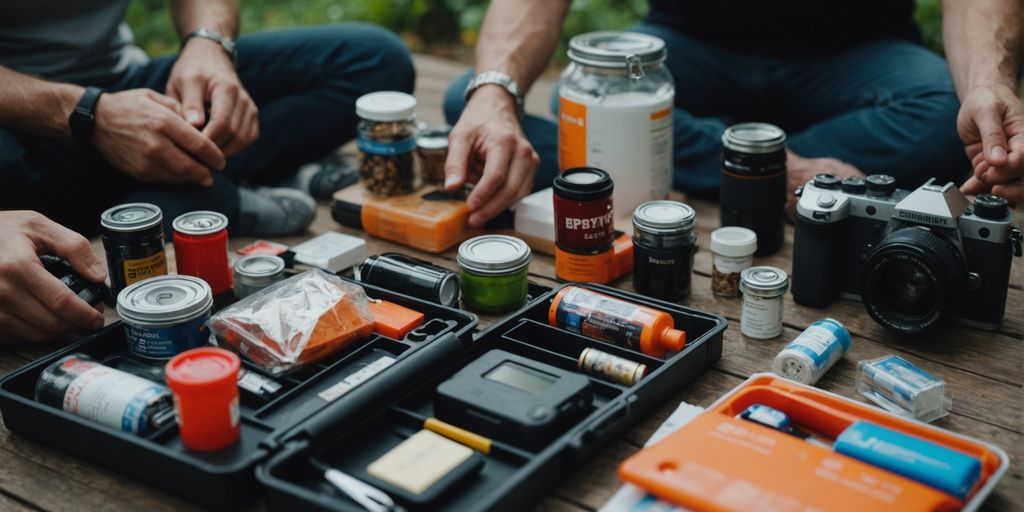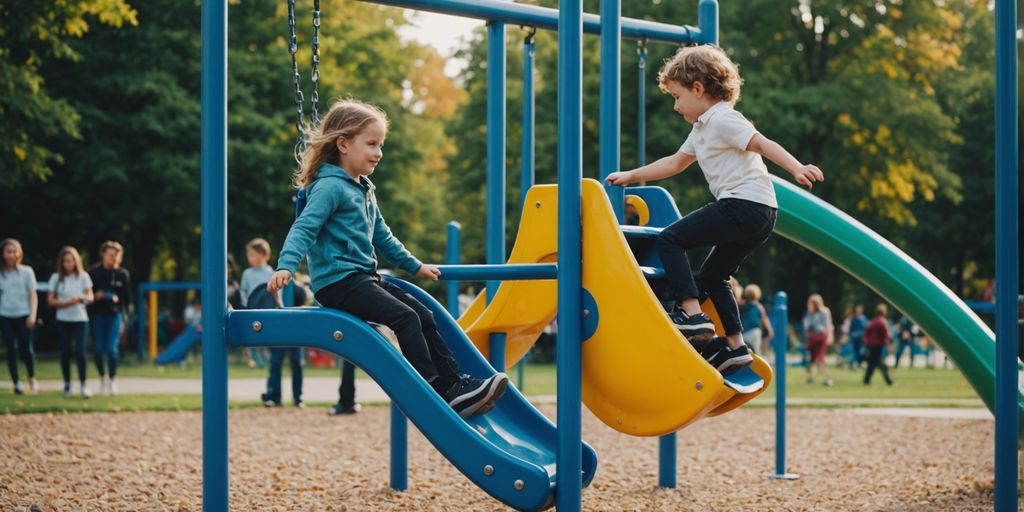Keeping our kids safe is a top priority for every parent. One essential part of this is teaching them about stranger danger. This means helping them understand who strangers are, which strangers are safe, and what to do in uncomfortable situations. By starting these lessons early, we can help our children stay safe and feel more confident when they are out in the world.
Key Takeaways
- Start teaching kids about stranger danger early to build their awareness and confidence.
- Help your child identify safe strangers, such as police officers or trusted neighbors.
- Establish clear safety rules at home, including keeping doors locked and not sharing personal information online.
- Practice role-playing different scenarios with your child to prepare them for real-life situations.
- Encourage open communication so your child feels comfortable discussing any concerns or fears they may have.
Understanding Stranger Danger
Defining Stranger Danger
Stranger Danger is a term used to teach kids about the potential risks posed by unfamiliar people. It’s an important life skill that helps children recognize and avoid dangerous situations. Kids need to understand that a stranger is anyone they don’t know, even if the person seems friendly or looks nice.
Why It’s Important to Teach Kids Early
Teaching kids about Stranger Danger early on is crucial. As children start going to preschool, kindergarten, or other activities, they may encounter unfamiliar people daily. Personal safety becomes a priority, and knowing how to react to strangers can prevent harmful situations. Early education helps kids develop the skills they need to stay safe.
Common Misconceptions
There are several misconceptions about Stranger Danger. One common myth is that all strangers look scary or act suspiciously. In reality, many people with bad intentions can appear friendly and trustworthy. Another misconception is that only children need to be aware of Stranger Danger. However, it’s a skill that everyone should have, regardless of age. Emergency preparedness and understanding how to handle encounters with strangers are essential for all family members.
Recognizing Safe Strangers
It’s important to teach children that not all strangers are bad. If they need help—whether they’re lost, being threatened by a bully, or being followed by someone—the safest thing for them to do in many cases is to ask a stranger for help. You can make this easier for them by showing them which strangers are okay to trust.
Establishing Safety Rules at Home
Creating a safe environment at home is crucial for your child’s well-being. Engage your kids in creating home safety checklists and assembling emergency kits. This not only makes them feel involved but also teaches them the importance of safety.
Keeping Doors Locked
One of the simplest yet most effective safety rules is to keep doors locked at all times. Teach your children to never open the door without an adult present. This rule is essential to prevent unauthorized entry and ensure your child’s safety.
Phone Safety Guidelines
Children should know how to use the phone in case of an emergency. Make sure they memorize important numbers, including 911 and your contact information. Explain the importance of not sharing personal information over the phone with strangers.
Internet Safety Tips
The internet can be a dangerous place if not used correctly. Set clear rules about what websites they can visit and what information they can share online. Regularly monitor their online activities and encourage them to talk to you if they encounter anything suspicious.
Role-Playing Scenarios
Role-playing is a powerful tool for teaching kids how to handle tricky situations without scaring them. Role-playing is the key to teaching kids how to handle tricky situations. By acting out different scenarios, children can learn what to do if they are approached by a stranger or find themselves in an uncomfortable situation. This method helps them grasp the meaning of personal boundaries and the importance of saying no to uncomfortable situations.
Teaching Kids What to Do if Lost
Identifying Meet-Up Places
When you’re out in public, it’s crucial to explain to your child what to do if they get lost. Identify a ‘meet-up place’ where your child should go if they get separated from you. Point out what people who work there are wearing and tell them to find a staff member if they can’t find you.
Approaching Safe Adults
Help your child identify safe adults, like police officers or trusted neighbors, who they can go to if they sense danger. Make sure they know to look for an employee or security guard and not to leave the site. Encourage your child to trust their intuition and take action when they feel unsafe.
Staying Calm and Focused
Teach your child to stay calm and focused if they get lost. Remind them not to leave the area and to approach a safe adult for help. Practicing these steps can help your child feel more confident and prepared in case they ever get lost.
Discussing Online Safety
Avoiding Sharing Personal Information
Establish Internet do’s and don’ts. Place any computer or phone your child uses in a common area, so you can monitor what they’re doing. Children this age shouldn’t be on social media or in chat forums. Tell your child never to give any personal information, answer questions, or fill out forms online. Discuss online citizenship and online safety with help from websites such as Common Sense Media.
Recognizing Online Predators
When your kids begin socializing online, you may want to talk to them about certain risks: inappropriate conduct: the online world can feel anonymous. Human trafficking is a significant problem, and predators can use chatrooms and other video games to arrange face-to-face meetings with kids. Know how to put parental controls on all apps on their devices and monitor them closely.
Safe Online Behavior
Make safety a part of your everyday life, and routine. Ask questions and present scenarios to check your child’s understanding. And establish home and phone safety rules, including keeping doors locked and not answering questions about personal details (location, address, etc.) over the phone or over the internet.
Empowering Kids to Say No
Teaching children to say "no" and demonstrate refusal skills when they feel uncomfortable is crucial. This helps them to set boundaries and respect others’ boundaries. Empowering children with the ability to say no can be life-saving.
Building Confidence
Encourage your children to be assertive. Make sure they know that it’s okay to say no to an adult and to run away from adults in dangerous situations. Encourage your children to play with others. There’s safety in numbers!
Understanding Boundaries
Teach your child to trust her intuition and to take action when she senses she is in danger. Tell her not to worry about being polite, but to make a lot of noise, run away, scream, shout, kick, or punch. Teach the NO-GO-TELL system. Your child should: 1) Say NO if someone tries to touch her or makes her feel scared or uncomfortable, 2) GO quickly away from the situation, and 3) TELL a trusted adult.
Reacting to Uncomfortable Situations
You should also talk to your children about how they should handle dangerous situations. One way is to teach them “No, Go, Yell, Tell.” If in a dangerous situation, kids should say no, run away, yell as loud as they can, and tell a trusted adult what happened right away. Make sure that your children know that it is okay to say no to an adult in a dangerous situation and to yell to keep themselves safe, even if they are indoors. It’s good to practice this in different situations so that your children will be prepared.
Creating a Safe Environment
Creating a safe environment for your child is crucial for their well-being. Active supervision is one of the most effective strategies to ensure safety and prevent injuries. This means always being aware of your child’s activities and surroundings.
Involving the Community
A secure home environment is essential, but involving the community can provide additional layers of safety. Encourage your child to build healthy relationships with family members, friends, and trusted community members. This network can offer support and help keep your child safe.
Regular Safety Drills
Conducting regular safety drills at home can prepare your child for various situations. Practice what to do in case of a fire, earthquake, or other emergencies. Make sure your child knows the escape routes and where to meet outside the home.
Open Communication Channels
Maintaining open communication with your child is vital. Make sure they feel comfortable coming to you with any concerns or questions. Listen to your child and offer the right support when needed. This helps create a loving environment where your child feels safe and understood.
Addressing Fears Without Causing Anxiety
Balancing Awareness and Fear
When teaching your child about stranger danger, it’s crucial to balance awareness and fear. Avoid using scary statements like, "A stranger might take you away!" Instead, focus on empowering your child with knowledge and confidence. Discuss "what if" scenarios in a calm, age-appropriate manner to help them feel prepared without being scared.
Age-Appropriate Conversations
Tailor your conversations to your child’s maturity and personality. If your child is naturally cautious, talk about strangers but don’t overemphasize the dangers. Notice if they become anxious and back off if needed. For more outgoing children, keep the lessons consistent but gentle.
Reassuring Your Child
Encourage open communication and create a safe environment where your child feels comfortable sharing their fears. Validate their feelings, even if they seem disproportionate. Celebrate every little progress they make to keep them motivated and confident.
Emergency Contacts and Resources
In an emergency, having quick access to important contact information can make a big difference. Make sure children have emergency contacts memorized or written down in a secure place. This can help them stay calm and focused during a crisis.
Memorizing Important Numbers
It’s crucial for kids to know key phone numbers by heart. This includes parents’ cell numbers, a trusted neighbor, and close relatives. You can create a visual emergency contact list to help children recognize family members and important phone numbers at a quick glance.
Using Safety Apps
Safety apps can be a great tool for both parents and kids. These apps can provide instant access to emergency services, family tracking, and even safety tips. Some apps also offer features like panic buttons and location sharing, which can be very useful in urgent situations.
Accessing Community Resources
Your community likely has resources to help keep your child safe. From local police stations to community centers, these places can offer support and information. Programs can use various manuals as a guide for their emergency planning process. Find the latest tools and resources to support children, families, and caregivers in your area.
Conclusion
Teaching your child about stranger danger is crucial for their safety. By making safety a part of everyday life, you can help your child understand how to react in different situations. Use role-playing to practice responses and establish clear rules about what to do if they encounter a stranger. Remember, it’s not just about avoiding strangers but also knowing which adults are safe to approach. Keep the conversation ongoing and adjust the lessons as your child grows. With these steps, you can help your child feel more confident and secure in their ability to stay safe.


